Smart metering is a digital technology that enables utilities to streamline their activities, reduce operational costs, wastage, and outages. Initially designed for the electric grid, the technology is suitable for others such as water and gas utilities, decentralized power generation and distribution companies, and more.
Usually, the metering system integrates different technologies to empower utilities and consumers with regular information about the consumption and quality of the supply.
A typical system has meters, a data collection device, a 2-way communication network, and a data processing server. When combined, the resulting data collection, transmission, and processing enable authorities to monitor and control a wide range of assets and services.
Ideally, it enables the utility company to continuously monitor and manage its infrastructure, consumption, and service quality. Consequently, this improves the delivery, efficiencies, and revenues.
By improving efficiency, smart metering provides various benefits to consumers, utility companies, and governments.
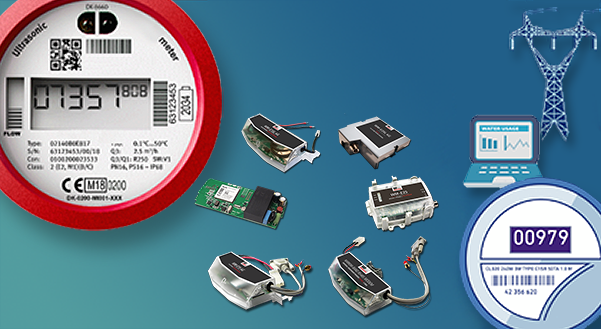
Smart metering provides almost real-time information about consumption and user behavior, the health status of the electrical, gas, or water supply network. It also provides the utilities with the ability to monitor and control various components from remote locations.
As smart metering technologies continue to evolve, they will support a wide range of other activities. These include but not limited to providing efficient distribution automation, support for plug-in EVs, integrating renewable energy and support for DERs, effective load, and demand forecasting, increasing efficiency and revenue, etc.
As more people, businesses and utilities invest in green energy, the intermittent nature of renewables results in some instabilities due to the mismatch between consumption and generation. Utilities and private power companies can use smart metering to address the challenge.
One approach is to integrate the systems with sensors and communications devices. The communication between the various components and the utility enables utilities to perform automatic demand responses.
Deploying smart metering is a capital-intensive activity since it requires replacing or upgrading traditional meters installing a communication and data processing platform. Some of the challenges include;
Deploying a smart metering technology is capital intensive, and as digital technologies continue to evolve, the systems are getting more complex and, therefore, requiring constant upgrading of equipment and skills. However, some utility companies are today moving from capital expenditure to operating expenditure to save on costs and increase flexibility. That said, the x-As-A-Service business models are gaining popularity across different industries.
As such, utility companies that do want to incur the high capital costs of designing, deploying, and managing a smart metering system, should consider outsourcing the services to vendors or third-party providers. The approach allows them to outsource part or the entire technology comprising the physical assets, infrastructure, and operations. And this enables them to focus on their core business at lower capital and human resource costs. Additionally, it prevents vendor lock-ins, equipment upgrading, and other ongoing expenses which they would have required to remain up to date.
In the case of smart metering, the provider or vendor is responsible for the purchase and installation of the assets, and the management, operational, and maintenance of the infrastructure. The vendor also ensures that the utility gets accurate and timely metering data as per agreed terms.
The choice of an outsourced or managed service depends on the technology posture of a company and the gap they want to fill. Services that a company can outsource range from software, such as software-as-a-service to hardware, such as the Equipment-as-a-Service (EaaS).
Depending on the utility requirements, it can subscribe to a single offering or an entire AMI infrastructure. In addition to reducing the upfront cost, the managed services have shorter deployment times and lower overall costs. Also, using a service such as SaaS or other cloud-based applications relieves the utility’s internal resources. Further, it eliminates the need to upgrade skills and implement complex systems to operate and manage an in-house smart metering infrastructure.
Among the most common business models in the utility industry are;
Equipment-as-a-Service, (EaaS) is a service model where a utility company, end-users, or other businesses leases equipment from a provider instead of purchasing the assets. In this arrangement, the third-party provider does the installation, management, operational, and maintenance of the leased equipment. Also known as a Machine-as-a-Service, the benefits of the service-driven business model include;
Metering as a service (MaaS) is a business model where a provider hosts and operates metering services tailored to meet the needs of a utility company. The service offering helps to reduce capital costs and enables the utility company to focus more on its core business. In a MaaS plan, the service provider delivers the metering data to the utility according to the agreed scope.
Typical offerings include daily or hourly consumption data, quality measurements, and providing the necessary management of the metering infrastructure and communications systems.
Also, the provider must have the capacity to provide business continuity and quick recovery solutions when there is an outage or disruption.
The Metering-as-a-Service benefits include
The LaaS model allows organizations to upgrade their lighting systems and control technologies with zero upfront costs. In most cases, retrofitting replace older lighting systems with newer and more energy-efficient LED lights and controls. The upgrade results in lower utility bills and the savings are passed onto the consumer. Commercial and industrial spaces are increasingly adopting the LaaS model in which the consumer pays for the light instead of purchasing and installing the lighting equipment and components. Ideally, a LaaS provides customers with a high-quality lighting solution at zero capital costs.
Benefits include;
The number of utilities adopting smart metering is increasing by the day. However, the electricity companies leading in the number of deployment. The metering has evolved, and the power companies can use a wide range of existing and additional technologies, including PLCs (power line communications), microwaves, and fiber optic cables to connect their meters to central processing servers.
Luckily, the power companies have no problem deploying intelligent technologies since they can use electrical energy to power their devices. However, water and gas may have some challenges since they cannot use their distribution infrastructure to transmit signals. As such, they must add more devices and also power them from the grid or long-lasting batteries.
Consequently, smart metering for the gas and water utilities has been lagging due to higher deployment costs compared to electricity. However, AMI architecture overcomes this by providing necessary infrastructure at a lower cost.
To install a smart metering solution, utility companies need to invest in various hardware and software components, and the skills to deploy, operate and maintain the system. Usually, any digital system is often vulnerable, thus exposed to security threats and the smart grid is not an exception.
While the cellular networks have evolved, some locations and especially the remote areas with low-density populations, still operate on the 2 G networks. These are not only slow but unable to support large volumes of data. Also, as many cellular companies are phasing out the 2G, equipment manufacturers are no longer building new devices for the network. Consequently, AMI companies could be shunning away from the networks since it could be very costly to deploy the systems, and also when there is a need to upgrade.
Generally, the 2 G provides a viable solution, especially in countries where it is widely used and likely to continue like this for some more years. However, some utility and AMI companies are avoiding big investments in the 2G systems in some markets – citing risks of incurring huge costs to upgrade when the cellular companies migrate to newer generation networks.
However, all is not lost, because as the cellular companies phase out the 2G and move to newer generations, there are freeing up the 450 MHz spectrum, which utilities can use to build their private LTE 450 networks.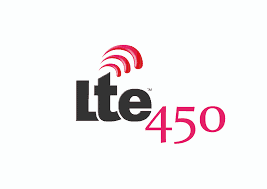
Although utilities can use public cellular networks, these at times suffer from congestion and signal losses. To overcome the challenges, the providers have been turning to the LTE 450 private networks. One benefit of the 450 MHz spectrum is that it is increasingly becoming free as more cellular operators phase it out as they move their networks to higher frequencies.
In particular, the LTE 450 provides secure, stable, and reliable connectivity with better coverage compared to the other wireless technologies. Benefits of private LTE networks include;
Beyond the economic benefits AMI and smart metering offers, they have been instrumental in improving the safety of the employees and consumers during the COVID-19 epidemic. Remote meter reading enforces social distancing automatically since workers do not have to visit the consumer’s households. In addition to these, traveling is reducing hence minimizing physical interactions between employees and the public.
Ideally, both the consumer and utility wins by the reduced physical exposure. Employees can work remotely from home while performing some control functions remotely.
Smart metering has been helping utilities to remotely read meters and perform other functions, such as connecting or disconnecting the supply remotely. Consequently, this minimizes physical contact as well as exposing the employees. Additionally, most of the employees can work from home.
Advanced Metering Infrastructure (AMI) refers to the entire infrastructure that supports smart metering. It comprises various hardware and software components that include smart meters, data collection devices at the consumer end, and data processing servers at the utility end. It also has a two-way communication network and various control equipment that connects and manages the components in the smart metering system.
Jointly, the various hardware and software components support the entire metering life cycle. That is, the systems support all the processes from data acquisition to delivering final consumption information to the consumers. In practice, the AMI architecture provides a two-way communication system that enables sending the consumption data to a meter data management system (MDMS) which then manages the processing and storage as well as the analysis. Afterward, it provides useful information to the utility and consumers.
The data communication can be through the standard fixed networks such as the public wired or wireless networks, fiber PLC, RF networks, and others that are available at the point of application. Other than supporting remote and automated meter reading that offers error-free data, an AMI provides the required infrastructure to identify network problems, quality issues, energy audits, and other operational and optimization functions. In the electric grid, AMI also supports remote load profiling, shedding, and other activities.
Although the system comprises so many different parts, below are the major components.
The smart meters collect the consumption data at regular intervals from the customer’s premises. It then sends the data through the two-way communication infrastructure. Consumers can use smart meters to monitor their consumption and other useful information from the utility. Also, through the meters and integrated IoT, and other sensors, the utilities can gain insights into the consumption and quality of the electrical power water or gas supplies.
The data acquisition includes data concentrator units (DCUs) and control devices that help to collect the data from smart meters and then send it to the MDMS through the communication networks. Usually, the communication networks provide the connection between the meter and the data processing platform. It includes networks such as PLC, broadband, fiber optic, RF, wired and wireless public networks, etc.
The MDMS are processing servers and systems that receive, store, process, and analyze the data from the meter. They then provide utility bills, asset status, demand and consumption, feedback, and other useful information which utility operators and consumers can access remotely using mobile phones and internet-connected devices. Additionally, the servers can issue control signals to isolate problems, connect or discontent the consumer, and many more functions.
Data communication is one of the main components of smart metering. In practice, it provides a connection between the consumers’ metering device and the remote utility control servers. The type of communication technology may differ from one location to the other depending on the available network.
Smart metering deployment has been gradual and thus relying on existing communication infrastructure. Typical installations include a mix of network connectivity such as Ethernet, microwaves, electric power lines, fiber optic cables, cellular wireless, Wi-Fi, and other standard and proprietary LAN and LAN technologies.
The wired technologies offer physical connectivity which is usually reliable and good when connecting a small number of devices. However, with increasing numbers, which can run into millions of devices, connecting them physically is going to be uneconomical and impractical. Also, the same applies to the rural and remote areas with few consumers and larger distances separating them. For this reason, wireless connectivity offers a more practical and cost-efficient solution.
Factors a utility should consider when choosing a communication technology include bandwidth, latency, reliability, coverage, spectrum availability, cybersecurity, backup power requirements, and cost.
Although there is no standard design when building the communications technologies for AMI, most utilities deploy a two-layer system. One layer connects the communications towers, substations, and other intermediate data collection points to the data management systems. The layer often uses high-speed networks such as fiber optic, PLC, or cellular wireless or microwave to backhaul large volumes of data.
The other layer connects the smart meters with the immediate collection points and relies on RF mesh, PLC, and other communication technologies. They may then use wireless mesh for field communications.
Utilities are increasingly using wireless networks to establish two-way communications in AMI. Unlike the costly, difficult to install, and scale wired networks, the wireless technologies provide a scalable, reliable, and cost-effective connectivity solution and coverage. The deployment includes point to point o multipoint as well as mesh topologies. Each of these topologies has its benefits and limitations, and suitability.
That said, it is best practice to choose the system that best fits the particular application while enabling the utility to meet its objectives and or goals.
A wireless network is easier to install and even connect to devices in hard-to-reach locations. Additionally, cellular wireless networks are already in many places, and the utilities can take advantage of these instead of building their infrastructure.
Currently, smart metering has been working across different wired and wireless networks such as 2G, 3G, 4G, and 4G LTE. Each of these has its pros and cons, such as slow speed and capacity issues. However, the new 5G cellular technology provides better and more reliable connectivity due to its higher capacity and low latency.
It also connects more devices than the 4G and other networks. The 5G systems are, in addition to low consumption, more energy-efficient, hence longer lifespans for battery-operated metering devices.
Existing cellular networks such as the 2G and 3 G are slow and unable to support the efficient transmission of large amounts of data. The 5G has superior qualities, and utilities can take advantage of its fast speeds and high capacity. Generally, the 5G networks carry more data at higher speeds. 5G is also more energy-efficient compared to other cellular network technologies such as 4G and older generations
However, the networks have shorter wavelengths and range hence requires more stations located closer to the users.
In AMI, the utilities can build their private 5G network in collaboration with the cellular service providers. A private 5G network would deliver benefits such as
As 5G technologies mature, they will provide an even better enabling network. Usually, the 5G networks provide faster connections with low latency. Also, they can support a much higher density of devices, uses less power, and thus environmentally friendly. As technologies advance, the 5G networks will support remote robots, the Internet of Things (IoT), drone, and other technologies that operators can use to perform manual tasks such as repairing and fixing faulty infrastructure components. Additionally, the 5G has the potential to bring up other new business models.
Smart metering is increasingly offering data-driven energy products and services that rely on new technologies. Towards this, many utilities are adopting connected technologies to improve efficiency.
Collecting data from meters more frequently enables utilities to make more informed decisions and consumers to gain visibility into the usage – which can help them adjust accordingly to save costs. Through smart metering, providers can offer other value-added services such as energy management and internet-connected lighting systems.

In the modern utility landscape, efficient data collection and management are key to maintaining operational effectiveness. Most utilities rely on […]
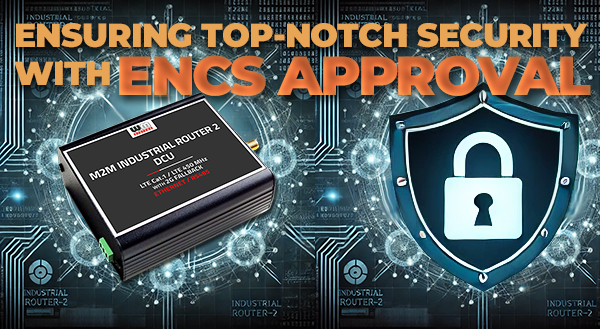
A Testament to Compliance with Key Cybersecurity Standards

We are thrilled to announce that Ali Mouslmani has joined WM Systems as our new partner in the United Arab […]
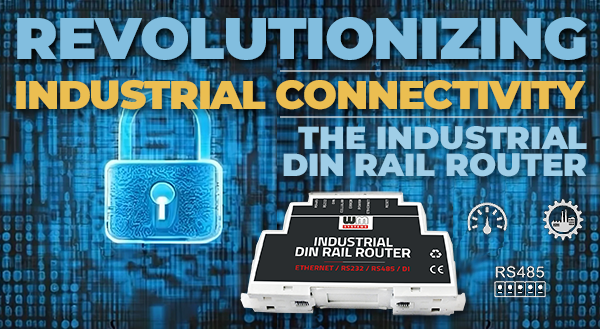
Introduction In the rapidly evolving world of industrial automation and IoT, the demand for compact, versatile, and efficient communication solutions […]
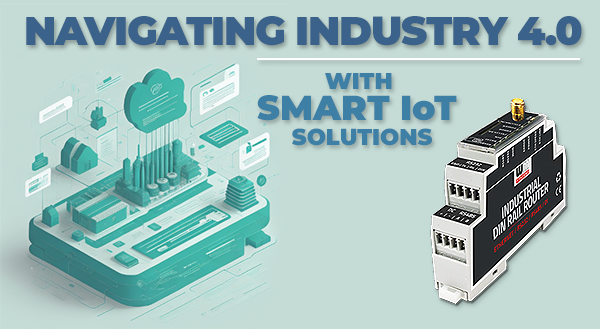
Introduction The fourth industrial revolution, or Industry 4.0, is redefining the landscape of industrial operations. Key to this transformation is […]

The group of WM Systems LLc.

Solar plants and farms are complex systems with a variety of equipment that needs to be monitored and controlled. This […]

Industrial settings are replete with equipment that demands efficient connectivity solutions. With the rise of the Internet of Things (IoT) […]

DIN-rail mountable industrial routers are an essential component of many industrial applications. They provide a reliable and secure way to […]
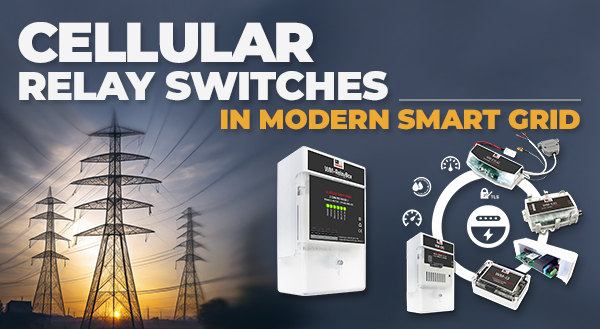
Make the modern smart grid more secure, resilient, and sustainable
